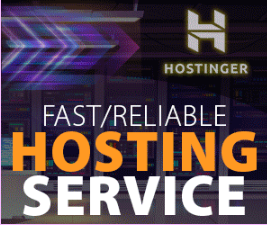Encountering a 500 Internal Server Error on your WordPress website can be incredibly frustrating. This common error doesn’t provide specific details about what’s wrong, making troubleshooting tricky. However, there are several potential causes and corresponding solutions that can help you get your site back up and running.
In this post, we’ll guide you through the step-by-step process of identifying and fixing the Internal Server Error in WordPress.
Table of Contents
ToggleWhat Causes a 500 Internal Server Error in WordPress?
The Internal Server Error is usually caused by server-side issues, such as:
- Plugin or theme conflicts
- Corrupted
.htaccessfile - PHP memory limit exhaustion
- Server misconfigurations
- Issues with WordPress core files
Step-by-Step Solutions to Fix the 500 Internal Server Error
Step 1: Check and Repair the .htaccess File
The .htaccess file in WordPress controls how URLs are structured. A corrupted or misconfigured .htaccess file can cause a 500 error.
- Access your site’s root directory using FTP or your hosting file manager (usually in
/public_html/or/www/). - Locate the
.htaccessfile and rename it to.htaccess_old. - After renaming the file, try to load your website. If it works, this means the
.htaccessfile was causing the issue. - To regenerate a new
.htaccessfile, go to your WordPress dashboard → Settings → Permalinks and click Save Changes. This action creates a new.htaccessfile with the default rules.
Step 2: Increase the PHP Memory Limit
If renaming the .htaccess file doesn’t solve the issue, the problem might be with memory exhaustion. You can try increasing the PHP memory limit.
- Edit the wp-config.php file:
- Connect to your site via FTP.
- Locate the
wp-config.phpfile in your root directory. - Add the following line of code above the comment that says
/* That's all, stop editing! Happy blogging. */:<?php define('WP_MEMORY_LIMIT', '256M'); ?> - Save the changes and check if the error is resolved.
- If that doesn’t work, you can also try increasing the memory limit in your hosting control panel (if you have access to
php.inior.htaccessfiles). Add the following lines in your.htaccessfile:php_value memory_limit 256M
Step 3: Deactivate All Plugins
Often, a conflicting or corrupted plugin can be the cause of the Internal Server Error.
- Access your website via FTP and navigate to the
/wp-content/directory. - Rename the
pluginsfolder toplugins_old. This action will deactivate all plugins. - Refresh your website. If it loads without errors, a plugin is causing the issue.
- Rename the folder back to
plugins, and then activate each plugin one by one via the WordPress dashboard to identify the faulty plugin.
Step 4: Switch to a Default WordPress Theme
If the issue isn’t with the plugins, your theme could be causing the error. You can troubleshoot this by switching to a default WordPress theme.
- Access your WordPress dashboard (if possible) and go to Appearance → Themes.
- Activate a default theme such as Twenty Twenty-One.
- If you can’t access the dashboard, go to your website’s root directory via FTP and navigate to
/wp-content/themes/. - Rename your current theme folder to something like
mytheme_old. This action forces WordPress to switch to the default theme. - Check your site. If it loads, the issue lies with your theme. Consider reinstalling or updating the theme.
Step 5: Reupload Core WordPress Files
Sometimes, a corrupted core WordPress file can cause an Internal Server Error. Reuploading the core WordPress files can fix this.
- Download the latest version of WordPress from WordPress.org.
- Extract the downloaded zip file.
- Using FTP, upload the files (except the
/wp-content/folder) to your site’s root directory, overwriting the existing files. - This will not affect your themes, plugins, or content, but it will replace potentially corrupted core files.
- Check your website after the upload.
Step 6: Enable Debugging
If you’re still unable to resolve the error, enabling debug mode in WordPress might help identify the specific issue.
- Open your wp-config.php file in your site’s root directory.
- Add or modify the following lines of code to enable debugging:
define('WP_DEBUG', true); define('WP_DEBUG_LOG', true); define('WP_DEBUG_DISPLAY', false); - Save the file. Errors will now be logged in a file called
debug.loglocated in the/wp-content/folder. - Open the
debug.logfile and review the logged errors to identify the root cause of the 500 Internal Server Error.
Step 7: Contact Your Hosting Provider
If all the above steps fail to resolve the error, it’s possible that the issue is server-related. Contact your hosting provider and ask if they can check for server misconfigurations, file permissions, or other potential issues on their end.
Preventing Future 500 Internal Server Errors
To prevent Internal Server Errors in the future, here are some tips:
- Regularly update your themes, plugins, and WordPress core.
- Use only trusted and compatible plugins and themes.
- Monitor your website’s memory usage and consider upgrading your hosting plan if needed.
- Always have a backup solution in place to restore your site quickly in case of issues.
Conclusion
The 500 Internal Server Error can be frustrating, but it’s usually fixable with the right approach. By following the step-by-step solutions outlined here, you can quickly troubleshoot and resolve the issue. If you need further assistance or want professional help with your WordPress site, don’t hesitate to contact the team at Craftwebx. We specialize in WordPress development and troubleshooting to keep your site running smoothly.



